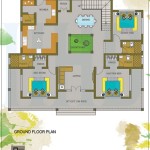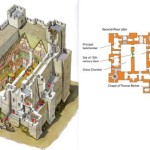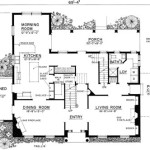Plan House: A Comprehensive Guide to Designing Your Dream Home
Building a house is a significant investment, both financially and emotionally. A well-thought-out house plan is crucial for ensuring the project's success, creating a functional and aesthetically pleasing living space, and staying within budget. This guide explores the essential aspects of planning a house, from initial conceptualization to choosing the right professionals.
Understanding Your Needs and Lifestyle
Before diving into architectural drawings and design aesthetics, it's essential to define the core purpose and functionality of the house. This involves considering the present and future needs of the occupants.
- Family Size and Composition: Consider the number of bedrooms, bathrooms, and common areas needed to accommodate current and potential future family members.
- Lifestyle and Activities: Do you enjoy entertaining guests? Do you need a home office? Do you have specific hobbies that require dedicated space?
- Accessibility Needs: Consider any current or future accessibility requirements for family members.
- Budget: Establishing a realistic budget early in the planning process will help guide design choices and prevent overspending.
Choosing the Right Location
The location of your house significantly impacts lifestyle and property value. Careful consideration of the following factors is crucial.
- Neighborhood: Research the neighborhood's safety, schools, amenities, and community atmosphere.
- Proximity to Work and Services: Consider commute times, access to healthcare, shopping centers, and other essential services.
- Lot Size and Topography: The size and shape of the lot will influence the house's design and outdoor space possibilities.
- Local Regulations: Familiarize yourself with local building codes, zoning regulations, and any environmental restrictions.
Working with Architects and Designers
Architects and designers play a vital role in translating your vision into a tangible plan. Choosing experienced professionals is essential for a successful project.
- Research and Referrals: Seek recommendations from friends, family, or online resources.
- Portfolio Review: Evaluate the architect's or designer's previous work to ensure their style aligns with your preferences.
- Communication and Collaboration: Effective communication is crucial throughout the design process. Ensure the architect or designer is responsive and open to your input.
Key Elements of a House Plan
A comprehensive house plan encompasses various elements that dictate the structure and functionality of the home.
- Floor Plans: These drawings depict the layout of each floor, showing the arrangement of rooms, walls, doors, and windows.
- Elevations: Elevations show the exterior views of the house from different sides, indicating the height and design of the walls, roof, and other features.
- Sections: These drawings show a cross-section of the house, revealing the internal structure, including framing, insulation, and roofing details.
- Site Plan: The site plan shows the location of the house on the lot, including driveways, walkways, landscaping, and utility connections.
- Specifications: Detailed specifications outline the materials, fixtures, and finishes to be used in construction.
Considering Sustainability and Energy Efficiency
Incorporating sustainable design principles can lead to long-term cost savings and a reduced environmental footprint.
- Passive Solar Design: Optimize window placement and orientation to maximize natural light and heat gain during winter months.
- Insulation and Air Sealing: Proper insulation and air sealing can significantly reduce energy consumption for heating and cooling.
- Energy-Efficient Appliances and Lighting: Choosing energy-efficient appliances and lighting fixtures can minimize electricity usage.
- Water Conservation: Implementing water-saving fixtures and landscaping techniques can reduce water consumption.
Legal and Regulatory Considerations
Navigating the legal and regulatory aspects of building a house is crucial for avoiding delays and complications.
- Building Permits: Obtaining the necessary building permits from local authorities is essential before commencing construction.
- Inspections: Regular inspections throughout the construction process ensure compliance with building codes and safety regulations.
- Homeowners Insurance: Securing homeowners insurance will protect against potential damages or losses during and after construction.
Budgeting and Financing
Developing a realistic budget and securing financing are fundamental steps in the house planning process.
- Cost Estimation: Work with your architect and builder to develop a detailed cost estimate for the project.
- Financing Options: Explore various financing options, such as mortgages and construction loans, to determine the best fit for your financial situation.
- Contingency Planning: Include a contingency fund in your budget to account for unexpected expenses that may arise during construction.
Planning a house is a complex yet rewarding endeavor. By carefully considering these key aspects and collaborating with experienced professionals, you can create a home that reflects your unique vision and meets the needs of your family for years to come.

House Plans How To Design Your Home Plan

Small House Design 2024001 Pinoy Eplans Floor Plans

House Plans How To Design Your Home Plan

Small House Design 2024005 Pinoy Eplans Modern Plans Floor

House Plans How To Design Your Home Plan

Simple 3 Room House Plan Pictures 4 Nethouseplans Building Plans Designs With Small Modern

House Plan Maywood Sater Design Collection

Modern Farmhouse Plan 1 669 Square Feet 2 3 Bedrooms Bathrooms 009 00378

3 Bedroom House Plans Your Guide To Perfect Home Design

House Plans How To Design Your Home Plan








